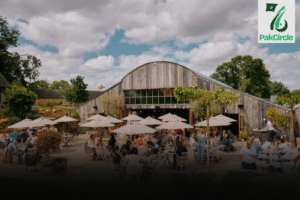Adapting books for special education is one of the most effective ways to support diverse learners in developing literacy skills. Adapted books are specifically designed to meet the needs of students with various disabilities, such as autism, communication disorders, and developmental delays. These books are modified versions of traditional stories, with adjustments to content, language, and presentation that make them accessible and engaging for students who may struggle with standard learning materials.
For educators, parents, and caregivers working with children who require additional support, adapted books for special education offer a unique approach to foster literacy, improve communication skills, and encourage active participation in learning. Luckily, there are many free resources available that provide adapted books, making it easier for educators to access and implement them in their teaching.
In this article, we will explore the benefits of adapted books, review free resources that offer them, and provide tips on how to create your own adapted books for special education.
What Are Adapted Books?
Adapted books are modified versions of traditional storybooks, tailored to meet the learning needs of children with disabilities. These books are typically designed to enhance accessibility, engagement, and comprehension through:
- Simplified Language: Adapted books often feature shorter sentences, repetitive phrases, and vocabulary that aligns with the child’s developmental level. This ensures that children can understand and connect with the story.
- Visual Supports: Pictures, symbols, and other visual cues are incorporated into the text to support comprehension and make abstract concepts more concrete. This can be especially helpful for children with learning disabilities or those who rely on visual learning.
- Interactive Features: Many adapted books include elements like flaps, velcro pieces, or matching activities that allow children to interact with the story. This multi-sensory approach enhances engagement and retention.
- Tactile Components: In some cases, adapted books incorporate textures or physical elements that students can touch or manipulate, which further supports sensory integration and learning.
The main goal of adapted books is to create an engaging, supportive learning environment where students feel empowered to participate in literacy activities, regardless of their learning challenges.
Why Are Adapted Books Important for Special Education?
1. Supports Diverse Learning Styles
Adapted books are highly beneficial for students with diverse learning needs, including those with sensory processing disorders, autism, dyslexia, or intellectual disabilities. By incorporating visual, tactile, and interactive components, adapted books accommodate different learning styles, ensuring that every student can access and engage with the content in a way that works best for them.
2. Builds Literacy Skills
Adapted books provide an excellent opportunity for students to develop key literacy skills, such as reading comprehension, vocabulary building, and phonemic awareness. Because the text is simplified and supported by visuals, students are able to focus on understanding the core concepts of the story rather than struggling with complex language. This approach boosts confidence and encourages a love of reading.
3. Promotes Social-Emotional Development
Reading adapted books can be an emotional experience for students. Many adapted books include themes of friendship, empathy, and personal growth. These themes help students develop social-emotional skills, which are essential for building positive relationships, self-awareness, and emotional regulation. For children with special needs, these skills are critical for navigating social situations and developing a positive sense of self.
4. Encourages Active Participation
Unlike traditional storybooks, adapted books are designed to be interactive, encouraging students to actively participate in the learning process. By physically engaging with the book—whether by turning flaps, completing matching exercises, or manipulating sensory components—students become more involved in their own learning, which leads to better retention and a more enjoyable experience.
Top Free Resources for Adapted Books
There are several organizations and websites that offer free adapted books for special education. These resources provide a variety of books that are perfect for teachers and parents looking to enhance their children’s literacy skills. Here are some of the best free resources:
1. Speech is Beautiful
Speech is Beautiful offers a collection of over 400 free printable adapted books for students who use Augmentative and Alternative Communication (AAC). These books focus on building vocabulary, improving communication skills, and reinforcing learning through repetition and visuals. The collection includes books on everyday topics such as animals, transportation, and family, making it easy to integrate into different learning contexts.
- Key Features: Free printable books, AAC-friendly, engaging visuals, and functional vocabulary development.
- Ideal For: AAC users and children with speech or language delays.
- Website: Speech is Beautiful
2. Able2Learn
Able2Learn offers a range of free printable adapted books designed for children with autism and developmental disabilities. The books are designed to support early learning concepts such as colors, numbers, and basic vocabulary. The site provides options to modify the books based on the child’s level, ensuring that learning is accessible and engaging.
- Key Features: Interactive features, early learning focus, customizable books.
- Ideal For: Preschool children, students with autism or developmental disabilities.
- Website: Able2Learn
3. Individualized Visuals
Individualized Visuals offers free adapted books that are specifically designed for children with visual and cognitive challenges. The books cover various topics, from holidays to daily routines, and are designed with simple, visual-based texts and large images that are easy for young learners to comprehend.
- Key Features: Visual supports, simplified text, and large pictures for easier comprehension.
- Ideal For: Students with cognitive delays, visual impairments, or learning disabilities.
- Website: Individualized Visuals
4. Teachers Pay Teachers
While Teachers Pay Teachers is mainly a marketplace, many educators share free adapted books that can be downloaded directly from the platform. These books cover a variety of subjects and grade levels, and are designed to be interactive, with customizable options that allow for differentiation based on student needs.
- Key Features: Wide range of subjects, downloadable PDFs, free options.
- Ideal For: Educators looking for a variety of resources to support special education learners.
- Website: Teachers Pay Teachers
5. Teach Love Autism
Teach Love Autism offers a number of free adapted books designed for children on the autism spectrum. The books focus on essential life skills, social-emotional learning, and basic literacy concepts. These books are specifically tailored to help students with autism engage with stories and understand real-world concepts.
- Key Features: Life skills focus, autism-friendly adaptations, and printable resources.
- Ideal For: Children with autism, social-emotional learning.
- Website: Teach Love Autism
How to Create Your Own Adapted Books
Creating adapted books for special education can be a highly rewarding activity, allowing educators and caregivers to create personalized learning materials for their students. Here are some steps to help you create your own adapted books:
1. Choose a Simple Story or Topic
Select a well-known story or topic that your students can relate to or enjoy. You can also choose familiar themes like animals, family, or daily routines.
2. Simplify the Text
Rewrite the story in short, clear sentences. Use repetitive language to reinforce key vocabulary and concepts. Ensure that the sentences are at a level that matches the students’ reading ability.
3. Add Visual Supports
Include pictures or symbols next to key words to help reinforce the meaning of the text. These visuals can be clipart images, photos, or symbols that students are familiar with. The visuals help bridge the gap between the written word and students’ comprehension.
4. Make the Book Interactive
Add interactive elements like velcro pieces, flaps, or textured materials that students can touch and manipulate. These tactile elements help keep students engaged and provide a hands-on learning experience.
5. Print and Laminate
Once the book is complete, print and laminate the pages to make them durable. Lamination ensures that the book will last and can be used repeatedly in the classroom or at home.
Conclusion
Adapted books are an essential tool in special education, providing students with the resources they need to develop literacy skills, enhance communication, and engage in meaningful learning experiences. With the availability of free online resources, it has never been easier for educators and parents to access high-quality adapted books that meet the diverse needs of their students. Whether you’re using pre-made adapted books or creating your own, these resources offer an excellent way to support the learning of students with disabilities. By integrating adapted books into your classroom or home learning environment, you are providing a more inclusive, supportive, and engaging experience for students of all abilities.
Read More:
https://pakcircle.pk/kenton-community-education/
https://pakcircle.pk/revive-education/
https://pakcircle.pk/wayne-county-education-jobs/
FAQs
Are adapted books suitable for all ages?
Adapted books can be used for students of all ages, from preschool to high school, depending on their individual needs. The complexity of the language and visuals can be adjusted to match the student’s level.
How can adapted books help with social-emotional learning?
Many adapted books incorporate themes of friendship, empathy, and conflict resolution, which are ideal for promoting social-emotional learning in students.
Can I create my own adapted books from scratch?
Yes! You can create your own adapted books by simplifying stories, adding visuals, and incorporating interactive elements like flaps or textures to suit the needs of your students.
Where can I find free adapted books?
Several websites offer free adapted books for special education, including Speech is Beautiful, Able2Learn, and Teach Love Autism, among others. These resources offer downloadable, printable books to support various learning needs.
Are adapted books useful for students with autism?
Yes, adapted books are highly beneficial for students with autism as they often include visual supports, simplified text, and engaging activities that help students with autism understand the content and remain engaged.








